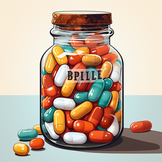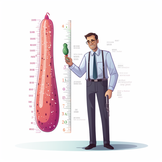What is the typical age range for erectile dysfunction?
- Understanding Erectile Dysfunction
- The Role of Chronic Diseases and Other Risk Factors
- ED: Prevalence in Men at Age 40 and Beyond
- Psychological Aspects of Erectile Dysfunction
- Factors Influencing Sexual Function at Different Ages
- Prevalence of ED in Younger Men
- Massachusetts Male Aging Study: Age-Related Prevalence of ED
- The Influence of Low Testosterone Levels on ED and Sexual Desire
- Treatment Options for Erectile Dysfunction
- Prevention of Erectile Dysfunction

Understanding Erectile Dysfunction
Erectile dysfunction (ED), commonly known as impotence, is the inability to get or keep an erection firm enough for sexual intercourse. It's a condition that affects many men, particularly as they age. It's also important to note that experiencing erection trouble from time to time isn't necessarily cause for concern. However, if erectile dysfunction is an ongoing issue, it can cause stress, affect self-confidence, and contribute to relationship problems.
The Role of Chronic Diseases and Other Risk Factors
Erectile dysfunction can be caused by a variety of factors, including chronic diseases. Conditions like diabetes, heart disease, high cholesterol, and high blood pressure can damage blood vessels and nerves needed for an erection. Other risk factors include obesity, tobacco use, certain types of surgery, and injuries.
ED: Prevalence in Men at Age 40 and Beyond
ED becomes more common as men age. In fact, about 70% of men are affected by the age of 70. While ED isn't a natural part of aging, age is a strong risk factor. Interestingly, studies have found that only about 10% of men experience ED before age 40, but the incidence rises sharply with each passing decade.
Psychological Aspects of Erectile Dysfunction
A single episode of ED can have a profound psychological effect, leading to anxiety about sexual performance. This anxiety can, in turn, lead to further erectile dysfunction, creating a vicious cycle. Additionally, stress, depression, and issues in relationships can all contribute to ED.
Factors Influencing Sexual Function at Different Ages
A variety of factors can influence sexual function at different ages. For younger men, psychological issues such as stress, anxiety, and depression are often the root cause. As men age, physical factors often play a larger role. These can include chronic health conditions, medication side effects, and changes in hormone levels, particularly low testosterone.
Prevalence of ED in Younger Men
Erectile dysfunction in younger men is less common but not unheard of. Studies suggest that about 8% of men aged between 20 and 29 years old and 11% of men between 30 and 39 years old have experienced some form of ED.
Massachusetts Male Aging Study: Age-Related Prevalence of ED
The Massachusetts Male Aging Study is a significant research project that has provided much of our knowledge about the prevalence of ED in various age groups. The study showed that the prevalence of ED increases with age. While less common in younger men, it is not an uncommon problem and can affect men at any age.
The Influence of Low Testosterone Levels on ED and Sexual Desire
Low testosterone levels can contribute to ED.
Testosterone is essential for sexual desire (libido), and without enough of it, both desire and erectile function can be affected. However, low testosterone is not a common cause of ED.Most men with ED have normal testosterone levels, suggesting that other factors are at play.
Treatment Options for Erectile Dysfunction
There are a variety of treatment options for ED, including lifestyle changes, medication, and surgery. Lifestyle changes might involve losing weight, quitting smoking, and exercising regularly. Prescription medications like sildenafil (Viagra) or tadalafil (Cialis) can be effective for many men. In some cases, surgery or other medical procedures might be recommended.
Prevention of Erectile Dysfunction
Preventing ED involves making healthy lifestyle choices and managing any existing health conditions. Regular exercise, a healthy diet, limited alcohol consumption, and not smoking are all strategies that can help reduce the risk of ED.
In response to the question, "At what age does erectile dysfunction typically start?", while ED can start at any age, it is more common in older men. "What are the odds of impotence by age?" As noted above, the odds increase with age, with about 70% of men affected by age 70. When asked, "Is erectile dysfunction ED a normal part of getting older?" While the prevalence of ED increases with age, it is not a normal part of aging and often indicates underlying health issues.
With regards to "What is the average age of ED diagnosis?", it varies, but most men start experiencing symptoms in their 60s. However, due to the increasing prevalence of ED in younger men, the average age is decreasing.
And finally, to the question "Can erectile dysfunction be prevented?" - by leading a healthy lifestyle and managing health conditions, it's possible to reduce the risk of developing ED.



